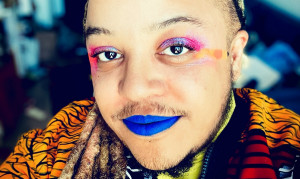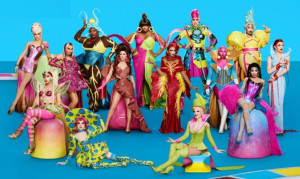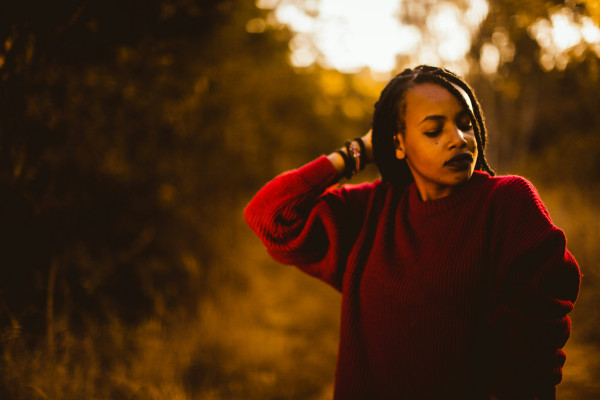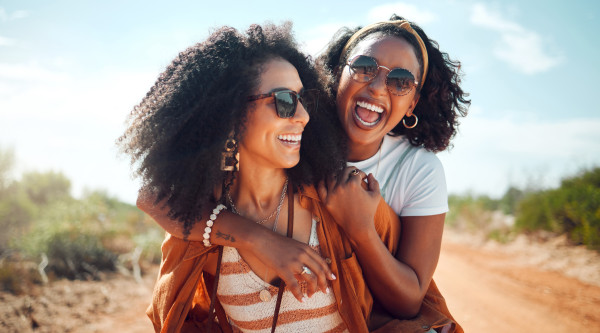It started when I had my first breast cyst removed from my right breast when I was only 14 years old. As a result of the lumpectomy, I had a raised scar on my areola.
It was a constant reminder that something about my breasts was never quite right. Yet the scars were so much more than physical. I still have flashbacks of the experience. I painfully recall having to disrobe before older white male doctors and having them poke around my breast with a needle during the biopsy while simultaneously being told to stand up and remain still throughout the procedure. All of this was scarring, too.
Sadly, I never felt like I had a voice to speak up about my experiences or a place to process them. And unfortunately, for most of my life, the shame of the scar, other lumps in my breasts, and the fear of breast cancer followed me.
Over the years, I learned how to do self-exams. I felt comfortable asking my family doctor to check anything that felt suspicious, which was followed up by ultrasounds. Each time, my fear of breast cancer was swept away when the results came back that those lumps were just benign. I breastfed both my children. I somehow was led to believe that this would provide me immunity from breast cancer. I had even been referred to a breast specialist, who squeezed my boobs and told me that I had nothing to worry about.
The “official” diagnosis was that I simply had lumpy breasts. And that was the end of my appointment. So, when I was nursing my second child, my son, and I became concerned about a lump in a place where I knew there was previously a lump, I felt that I didn’t need to act on it. I had been told I had nothing to worry about.
Well, all that was thrown out the window in 2017 when I was diagnosed with stage 4 breast cancer. Unfortunately, my cancer was already at the metastatic stage, which meant the breast cancer had spread beyond my breasts and now was in both my lungs.
Currently, there is no cure for metastatic breast cancer. There are treatments, but unlike people who are diagnosed at an earlier stage and can be treated with curative intent, I am destined to be on treatment for the rest of my life or until I run out of treatment options. Regardless of my self-exams, biopsies, ultrasounds, and specialists telling me I had nothing to worry about, I was now facing a life-threatening breast cancer diagnosis that I was totally unprepared for.
My greatest fear had been realized. Before I learned that I had metastatic breast cancer, I knew that the only option for me was to remove my breasts. In the end, my bilateral mastectomy with reconstruction and implants included both of my nipples being removed.
Despite my diagnosis, I thought of myself as a good patient. I attended all my appointments and information sessions at the hospital. I asked questions. I read over the brochures that I received at the hospital. I did my own research online. But the one thing that I kept circling back to was my desire to see images of breast reconstruction on Black women. I was shocked that in a city like Toronto, the only images of breast reconstruction that were presented to me were of white women.
I knew my body. I knew that as a kid and from my surgery at 14 years old, my scars never healed like the scars of my white friends. I was concerned about keloid scarring and I wanted to see how the reconstructed breasts of Black women healed.
Every time I asked, I was met with platitudes. I was assured that these procedures always look good on darker skin. I was told I didn’t have to worry about keloids, with no explanation as to why. The lack of awareness of my needs and the inability to address my concerns concretely made me feel alienated from this process. That somehow the experience of being Black and having breast cancer wasn’t something that had ever crossed their minds. I was being asked to trust them when they had been unable to earn my trust.
A year after my surgery, I was still frustrated about the appearance of my scars. I was weighing my options including what to do to minimize my scars, whether I should reconstruct my nipples, or even explore 3D nipple tattooing. I was excited to attend a national event on breast reconstruction. The event was promoted as an opportunity to learn more about breast reconstruction options, meet top plastic surgeons, and connect with other women sharing their reconstructed breasts live. I left that event feeling even more discouraged and alone. Unfortunately, there was nothing and nobody representing women of colour.
Three years after feeling lost and alone, depressed about my breast reconstruction options and the lack of diversity in the cancer care space, I connected with Rethink Breast Cancer to share with them my idea to create a resource for Black women who may be feeling just like me. Unseen. Unheard. Underrepresented. I needed an outlet to process my experiences and to shine a light on the need for diversity and representation. I wanted to find beauty, where I felt ugly. I wanted to empower, where I felt deflated. I wanted to find community and comfort where I felt alone and raw. In 2020, Uncovered: A Breast Recognition Project was born.
{https://www.youtube.com/watch?v=rbWm2cfX3pY&t=36s}
I was able to collaborate with Rethink Breast Cancer and breathe life into my years of journaling and wishing for better during my treatment. When I approached Rethink with my idea for the Breast Recognition Project, I was adamant that this had to be an uplifting and supportive experience for the women who courageously volunteered to not only uncover their breast cancer scars, but also the stories behind the scars. It also needed to be cathartic to me.
As a Black woman, I found myself creating a resource to solve a problem that women of colour didn’t create. I was determined that all the creatives, including the photographer, hairstylist, and make-up artist, would be Black women. Uncovered: A Breast Recognition Project was well-received, and I am proud to say that we now have a second edition.
But there is still work that needs to be done. It is time for society to move beyond its fragility when it comes to dealing with race. There are systems in place that have historically favoured certain groups to the detriment of others. Healthcare is not immune to this. We cannot move forward with change if we constantly relegate the needs of underrepresented peoples to a footnote or confine them to the parentheses at the end of a broader conversation.
So, what does it mean to be Black and navigate a breast cancer diagnosis? The women who uncover their experiences in the resource can tell you. Uncovered is Caroline, who despite losing her mother to breast cancer, still thought of breast cancer as a white woman’s disease because she never saw herself represented. It is the story of Frankie, whose mental health suffered because of cultural expectations to keep her diagnosis and experiences private. It is Laura, who was left feeling disheartened and frustrated due to the lack of research, information, and communication about how treatments and medication affect Black people. It is Tonia, who wanted to show her daughter that she is still a strong Black woman with or without her breast.
What I really want people to understand is that it is possible to provide world-class cancer care and still have unmet needs. It is possible to do good and do harm at the same time. It is possible to listen and be dismissive. These are the experiences of Black women facing a breast cancer diagnosis. The stories in Uncovered speak to these opposing realities. When assumptions are made that scars, radiation burns and healing are the same for everyone, Black women suffer.
When a Eurocentric bias as to who is represented in breast cancer brochures and images shared in the clinical cancer care setting, harm is being done. When a Black woman isn’t prepared for changes in skin pigmentation, and then her concerns are dismissed because they aren’t deemed painful, trust is broken.
When Black cancer patients lose their hair, and the only wig options are not appropriate or representative of natural Black hair, a woman’s dignity and identity are damaged. These experiences lead to stress and distress. These are the experiences that nobody prepares Black cancer patients for. These are precisely the stories that I shine a light on in Uncovered.
The stories in Uncovered not only build community and support for Black women, an underrepresented community in the cancer space and whose needs are often unmet, the resource also presents opportunities for growth and overdue systemic change that those who are entrusted with our care can work towards.
Uncovered is a resource that is for everyone. Though it shines a light on the disparities and discrepancies that BIPOC women face when navigating their cancer diagnosis, it is important for everyone to read. We need our healthcare providers to take up the torch and advocate for better and make systemic change happen now.
We need community agencies to create programming opportunities so that safe spaces exist for us to share our experiences. We need to have the same options and opportunities during our diagnosis and treatment that white people have been privileged to experience without ever having to ask. Uncovered is available free online and can be found at rethinkbreastcancer.com/uncovered.
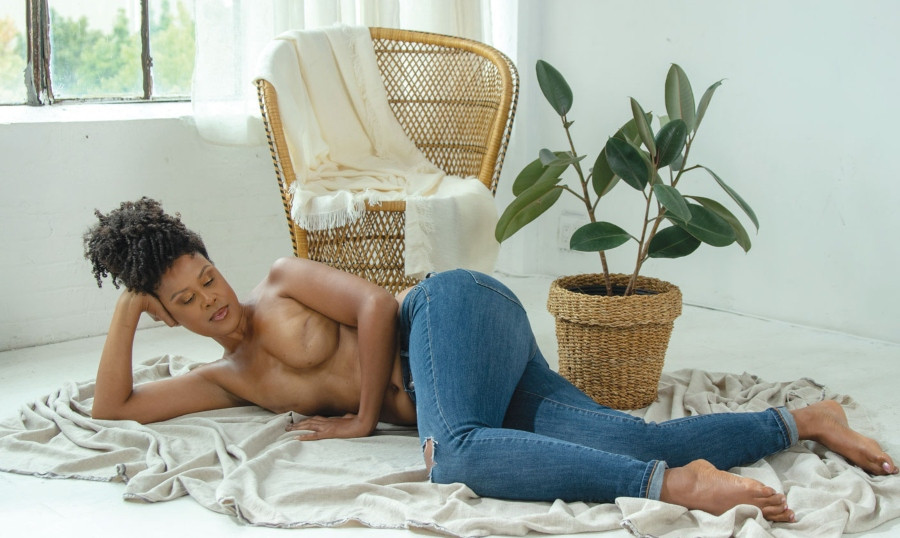
 By
By 




